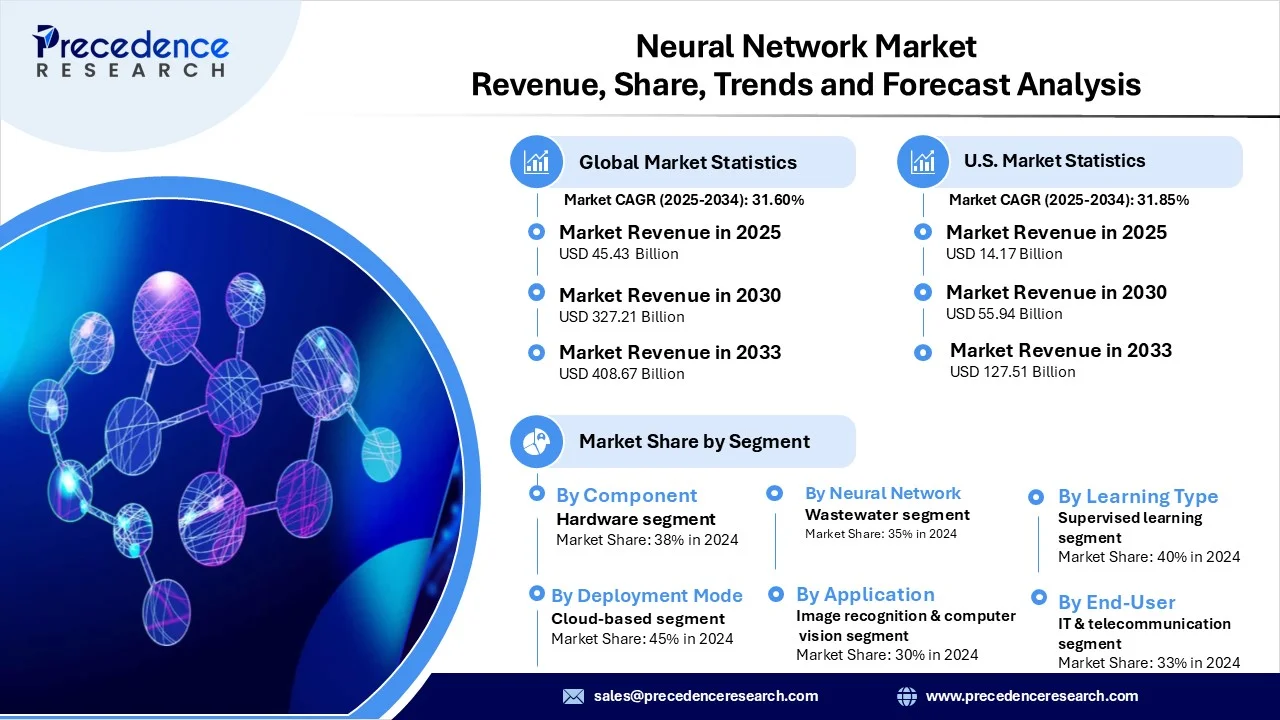November 2025
The global neural network market revenue reached USD 45.43 billion in 2025 and is predicted to attain around USD 408.67 billion by 2033 with a CAGR of 31.60%. The neural network market is growing rapidly because enterprises across industries are focusing on automation, predictive intelligence, and large-scale Artificial Intelligence adoption, driven by exponential growth in data and computing capabilities.

The expansion of the neural network industry is driven by several interconnected factors. The rapid increase in structured and unstructured data from sources like IoT, digital services, and social media has heightened the demand for complex pattern recognition and predictive capabilities, fostering innovation in neural networks. Advancements in GPU, NPU, and ASIC architectures are significantly reducing model training and inference times and costs, making neural networks more accessible and affordable. The cloud, along with AI-as-a-service offerings from hyperscalers like AWS, Microsoft Azure, and Google Cloud, provides virtually unlimited, scalable access without requiring large upfront capital investments.
North America registered dominance in the neural network market by capturing the largest share in 2024. The region's dominance is supported by the presence of major tech companies and significant R&D investment in AI. Early adoption of AI in both government and enterprise sectors and mature ecosystems in the U.S. have created the ideal conditions for market in the region.
Asia Pacific is the fastest-growing region, with countries like China, India, South Korea, and Japan making significant national commitments to AI. This includes rapid expansion of cloud infrastructure and the integration of organizations across local and regional industries within their national AI strategies. The growth of AI startups, government funding, and the localization of models are accelerating the adoption of neural networks in specific sectors and use cases, such as manufacturing, healthcare, smart cities, and digital commerce.
| Report Attribute | Key Statistics |
| Market Revenue in 2025 | USD 45.43 Billion |
| Market Revenue by 2033 | USD 408.67 Billion |
| CAGR from 2025 to 2033 | 31.60% |
| Quantitative Units | Revenue in USD million/billion, Volume in units |
| Largest Market | North America |
| Base Year | 2024 |
| Regions Covered | North America, Europe, Asia-Pacific, Latin America, and the Middle East & Africa |
Get this report to explore global market size, share, CAGR, and trends, featuring detailed segmental analysis and an insightful competitive landscape overview @ https://www.precedenceresearch.com/sample/6938
You can place an order or ask any questions, please feel free to contact us at sales@precedenceresearch.com |+1 804 441 9344
November 2025
October 2025
July 2025
July 2025